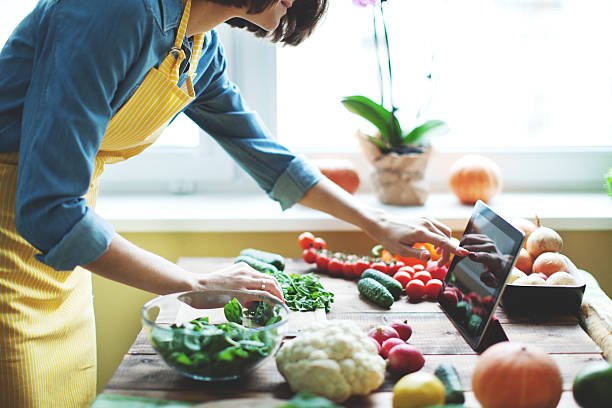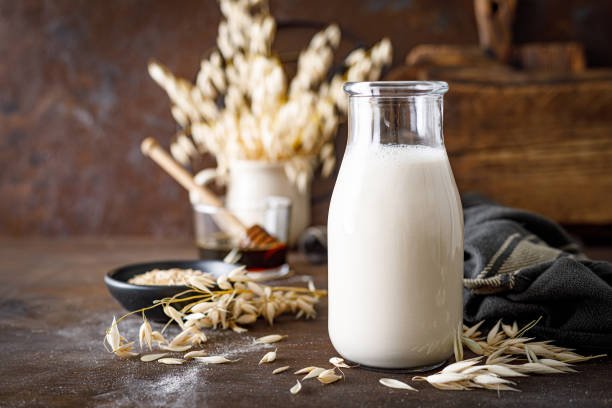Introduction
If you’ve been thinking about switching to a dairy free high protein diet, you’re in the right place. Whether you’re lactose intolerant, vegan, or just exploring new dietary options, it offers incredible benefits. But where do you start? And how can you make sure you’re getting enough protein without relying on dairy? Let’s dive in.
Why Consider a Dairy Free, High Protein Diet?
A dairy-free diet might be a necessity for some, but it can also be a lifestyle choice for others. Dairy products, while rich in calcium and protein, can cause issues for people with lactose intolerance or dairy allergies. On the other hand, a high-protein diet is essential for muscle repair, growth, and overall body function. By combining these two concepts, you can enjoy the benefits of a protein-rich diet without the drawbacks of dairy.

Benefits of Going Dairy-Free
Going dairy-free can lead to clearer skin, better digestion, and even weight loss. Some people find that cutting out dairy helps reduce bloating and other digestive issues. It can also decrease the risk of developing certain diseases, like heart disease and certain types of cancer.
Importance of Protein
Protein is the building block of life. It’s crucial for muscle development, tissue repair, and the production of enzymes and hormones. Without enough protein, you may feel fatigued, experience muscle loss, or struggle with a weakened immune system. A dairy-free, high-protein ensures you get the protein you need while avoiding potential dairy-related issues.
How to Get Protein Without Dairy
Now that we know the benefits of a high-protein diet, the next question is: how do you get enough protein? Fortunately, there are plenty of options available that don’t involve dairy.
Plant-Based Protein Sources
Plants might not seem like the most obvious source of protein, but many plant-based foods are packed with it. Legumes such as lentils, chickpeas, and black beans are outstanding sources of protein. Quinoa, a grain-like seed, is another fantastic option, as it contains all nine essential amino acids. Nuts and seeds such as almonds, chia seeds, and hemp seeds are also rich in protein.
Meat and Fish
If you’re not vegetarian or vegan, meat and fish are straightforward sources of high-quality protein. Chicken breast, turkey, and lean cuts of beef are all excellent choices. Fish, especially fatty fish like salmon and tuna, provide not only protein but also healthy omega-3 fatty acids.
Eggs and Egg Substitutes
Eggs are a versatile and convenient source of protein. They can be cooked in various ways, from scrambled to poached, and added to dishes for a protein boost. If you’re avoiding eggs as well as dairy, there are plant-based egg substitutes available, made from ingredients like mung beans or chickpea flour.
Protein Powders and Supplements
Sometimes, it can be challenging to get enough protein from whole foods alone. In these cases, protein powders can be a convenient way to increase your intake. Look for pea protein, hemp protein, or brown rice protein powders, which are all dairy-free and high in protein.

Planning Your Dairy-Free, High-Protein Diet
A successful diet is all about planning. Here’s how to structure your meals to ensure you’re getting enough protein throughout the day:.
Breakfast
Start your day with a protein-packed breakfast. Try a smoothie made with almond milk, a scoop of pea protein powder, and a handful of spinach. You could also have scrambled eggs with avocado on whole-grain toast or a quinoa breakfast bowl with nuts and berries.
Lunch
For lunch, opt for a salad with grilled chicken, quinoa, and plenty of fresh vegetables. You can also make a wrap using a whole-grain tortilla filled with black beans, lettuce, tomato, and a dollop of guacamole.
Dinner
Dinner is where you can get creative. Consider dishes like grilled salmon with roasted vegetables or a stir-fry made with tofu, broccoli, and bell peppers. If you’re in the mood for something hearty, try a lentil stew with plenty of spices and herbs for flavor.
Snacks
Snacks are essential to keeping your energy up throughout the day. Keep it simple with a handful of almonds, a protein bar, or some Greek yogurt if you’re not avoiding dairy entirely. Another great option is hummus with sliced vegetables like carrots and cucumber.

Potential Challenges and How to Overcome Them
Switching to a dairy-free, high-protein diet might seem daunting at first. Here are some common challenges and how to overcome them.
Getting Enough Calcium
One concern with eliminating dairy is getting enough calcium. However, many dairy-free foods are rich in calcium, including leafy greens like kale and broccoli, fortified plant milks like almond or soy milk, and tofu.
Meal Preparation Time
Preparing high-protein, dairy-free meals can take time, especially if you’re not used to cooking. Consider meal prepping at the beginning of the week so you have healthy options ready to go. You can also stock up on quick protein sources like canned beans, frozen vegetables, and pre-cooked grains.
Eating Out
Eating out can be tricky on a diet, but it’s not impossible. Many restaurants now offer dairy-free options, and you can always ask for modifications. For example, order a salad without cheese or request grilled meat or fish without butter.

Sample Meal Plan for a Week
To make things easier, here’s a sample meal plan for a week’s diet. Feel free to mix and match or adjust according to your preferences.
Monday
Breakfast: Smoothie with almond milk, pea protein powder, and spinach
Lunch: Grilled chicken salad with quinoa and vegetables
Dinner: Enjoy a stir-fry of tofu with broccoli and bell peppers.
Snack: Almonds
Tuesday
Breakfast: Quinoa bowl with nuts and berries
Lunch: Turkey and avocado wrap
Dinner: Lentil stew with spices and herbs
Snack: Hummus with carrot sticks
Wednesday
Breakfast: scrambled eggs served with avocado on whole-grain toast.
Lunch: Black bean salad with tomatoes and guacamole
Dinner: Grilled salmon with roasted vegetables
Snack: Protein bar
(Please continue this pattern for the rest of the week.)
Final Thoughts
A dairy-free, high-protein diet can be a fantastic way to improve your health, whether you need to avoid dairy or are just looking for a new dietary challenge. By focusing on high-protein foods that don’t contain dairy, you can build a balanced diet that supports your body’s needs. Remember to plan your meals, stay mindful of your nutrient intake, and enjoy the process of discovering new foods and flavors.
This diet may require some adjustments and learning, but with a little effort, it can become a natural and rewarding part of your lifestyle. So why not give it a try? Your body will thank you for it.




Business dicker Good post! We will be linking to this particularly great post on our site. Keep up the great writing
Real Estate Good post! We will be linking to this particularly great post on our site. Keep up the great writing
Real Estate I appreciate you sharing this blog post. Thanks Again. Cool.
Real Estate You’re so awesome! I don’t believe I have read a single thing like that before. So great to find someone with some original thoughts on this topic. Really.. thank you for starting this up. This website is something that is needed on the internet, someone with a little originality!